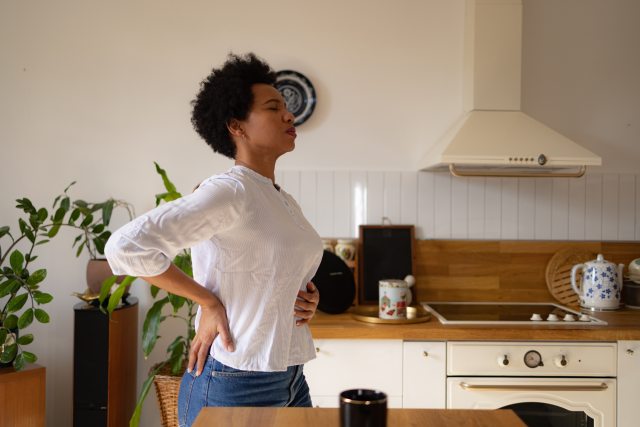Gut check: Could your bathroom visits be a sign of irritable bowel syndrome?
| Healthy You | Wellness

Stomach pain, bloating, constipation or diarrhea, it could be IBS.
Irritable bowel syndrome (IBS) is more common than many people realize. And IBS involves more than your digestive system — it’s also a condition linked to the brain and nervous system. “IBS is known as a disorder of the gut-brain axis,” says Vimal Bodiwala, MD, a gastroenterologist at PeaceHealth in Longview, Washington. This means that it involves the brain’s signals to the digestive tract.
Worldwide, 1 in 10 people may have IBS, according to the International Foundation for Gastrointestinal Disorders. IBS is about twice as common in people who identify as women, the foundation says.
IBS is a long-term condition, but it is possible to reduce symptoms. The severity of how you feel can also vary from day to day or even throughout the day.
What causes it?
It isn’t entirely clear why some people experience IBS. It may be how the muscles in the intestines move food around. “Medical science has shown that there are many factors that could lead to the condition,” Dr. Bodiwala says. “Increased gut sensitivity and life stressors might also play a role.”
What are the symptoms?
A key symptom is abdominal pain that goes away after you have a bowel movement (using the restroom).
Some other common symptoms are:
- Frequent or too few trips to the bathroom to have bowel movements.
- Bloating.
- Feeling like you haven’t completely emptied your bowels.
- You may feel like you have diarrhea at some points and then constipation other times. Or you may feel both, but often have one more than the other.
How is it treated?
Your treatment will depend on how much the symptoms are affecting your daily life. Your doctor may recommend a low-FODMAP diet, reducing stress or physical therapy.
FODMAPs are carbohydrates that are in many types of foods. It stands for fermentable oligosaccharides, disaccharides, monosaccharides and polyols. Dr. Bodiwala advises against starting a LOW FODMAP diet on your own. He also recommends speaking with your doctor prior to starting it.
If you have digestive problems, these can make your symptoms worse.
Following a low-FODMAP diet means you stop eating high-FODMAP foods for about two months. Then you slowly add them back in to your diet to see what foods cause digestion problems.
Some high-FODMAP foods include:
- Fruits like apples and watermelon.
- Grains like farro and couscous.
- Dairy and dairy-free items like ice cream, yogurt and oat milk.
- Legumes like chickpeas, lentils or baked beans.
- Sweeteners like high-fructose corn syrup, agave and molasses.
- Vegetables like artichokes, celery and garlic.
Low-FODMAP foods that may settle easier in your stomach include:
- Fruits like bananas, grapes and olives.
- Grains like quinoa, oats and brown rice.
- Dairy and dairy-free items like butter and almond milk.
- Sweeteners like maple syrup and brown sugar.
- Vegetables like bell peppers, eggplant and squash.
When to see a doctor
If you’re having symptoms that could be IBS, Dr. Bodiwala suggests having a conversation with your primary care provider. Together you can decide if it makes sense to see a specialist.
This might be the case if you see blood or mucus in your feces (poop), have anemia or notice that you’ve unexpectedly lost weight or have no appetite.
People whose bathroom habits change dramatically, who have a family history of cancer, or who are older adults with new symptoms of IBS may also benefit from seeing a gastroenterologist, he says.
Perhaps keep a list of symptoms and what makes them worse or better. Bring these up with your doctor.





